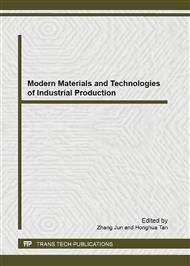p.538
p.543
p.547
p.552
p.558
p.564
p.569
p.575
p.581
The Performance of Eye Diagrams and Bit Error Rates of Optical Fiber Communication System
Abstract:
In order to better understanding of the process of optical fiber transmission, a software package which called VPI will be developed to help to investigate the characteristics of the individual communications system components. The system includes source, transmitter, fiber, attenuator, amplifier and receiver that examine and interpret the whole system performance imposed by attenuation and dispersion, conduct the system design and performance analysis at the end. To further reinforce the analysis of experimental process in the fiber optic communications, the bit error rate (BER) will be introduced that enables to evaluate the signal quality performance by examining eye diagram, and explore the bit-rate value imposed on communication systems by noise, attenuation and dispersion. This paper will discuss the design procedure and experimental results associated with particular emphasis on BER.
Info:
Periodical:
Pages:
558-563
Citation:
Online since:
September 2013
Authors:
Keywords:
Price:
Сopyright:
© 2013 Trans Tech Publications Ltd. All Rights Reserved
Share:
Citation:


